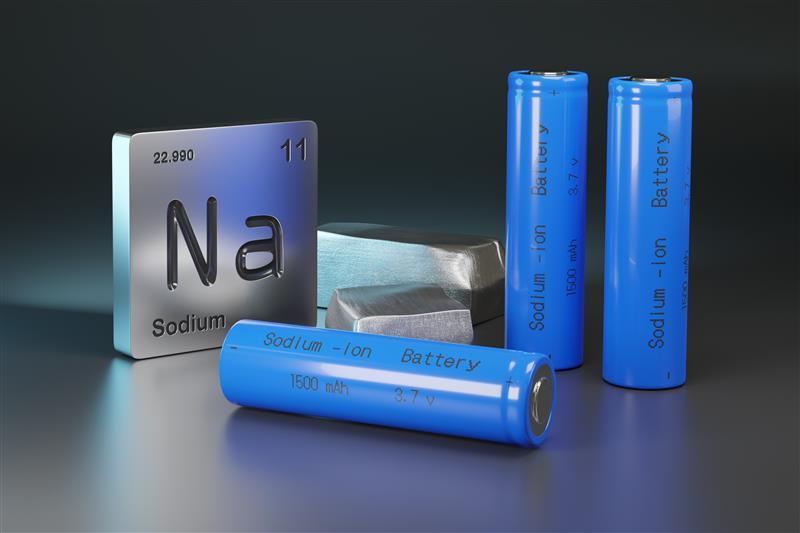NA-Ion Batteries: A Sustainable and Affordable Alternative to Li-Ion for a Resilient Power Grid
Published on 06 Mar, 2025

Among current energy storage solutions, lithium-ion batteries (LIBs) stand out for their exceptional energy density and versatility, powering everything from portable devices to large-scale applications such as electric vehicles and stationary storage systems. However, the growing demand for LIBs, particularly for large-scale uses, has revealed challenges related to uneven raw material distribution and fluctuating prices, creating a need for alternative energy storage technology.
Sodium-ion batteries (SIBs) have emerged as a viable alternative to LIBs, offering a solution in situations where supply chain or cost-related issues affect LIBs. Since no single battery chemistry can address all energy storage requirements, diversification is critical for sustained capacity growth. Sodium-ion technology is expected to complement, rather than replace, LIBs in various applications. Countries without direct access to lithium resources are exploring sodium-ion and other chemistries to enhance energy security and reduce geopolitical risks in their supply chains.
SIB Technology –
SIB consists of three components: a positive electrode (cathode), a negative electrode (anode) and an electrolyte. The sodium ions move between the electrodes during charging and discharging cycles to store and release energy.
Comparison of LIBs and SIBs
| LIBs | SIBs | |
|---|---|---|
| Cyclability | 2000 | 4000 |
| Energy Density | 250 | 160 |
| Voltage | 4 | 3.7 |
| Safety | Medium | High |
| Need for critical raw materials | Yes | No |
| Cost | More expensive and more volatile | Less costly and less volatile |
| Size | Light | Bulky |
| Low Temperature Performance | Lower Performance | Good Performance |
| Charging and discharging time | Longer Duration | Fast in both cases. Allows 100 % discharge |
| Flammability | Flammable | Non-Flammable |
| Recyclability | Difficult | Moderate |
Note: Text highlighted in green indicates are the most advantageous.
SIB Market Scenario –
The global SIB market was valued at USD 0.5 billion in 2023 and is expected to register a compound annual growth rate (CAGR) of approximately 20% from 2023 to 2030. The Asia-Pacific region holds the largest market share in 2023.
According to the Wood Mackenzie Report, companies are significantly investing in SIB technology, fostering innovation, and enhancing their commercial potential. Leading players such as Natron Energy, Faradion, HiNa Battery Technology, Tiamat Energy, Zoolnasm and Cham Battery Technology are spearheading the SIB development effort, with plans to scale production and establish large manufacturing facilities.
| Company Name | Key Initiatives |
|---|---|
| Natron Energy |
|
| Acculon Energy |
|
| Contemporary Amperex Technology Co., Limited (CATL) |
|
SIB Application –
SIBs are cost-effective and sustainable, with applications in electric vehicles, grid energy storage, industrial storage, and backup power systems. Their use reduces the reliance on lithium and cobalt, mitigating supply chain risks and minimizing the environmental impact.
Impact on Renewable Energy –
SIBs could be pivotal in accelerating the adoption of renewable energy. These batteries can be used for large-scale grid storage, stabilizing power grids by storing energy produced during off-peak hours and releasing it when demand is high. This capability makes SIB technology essential for integrating intermittent renewable energy sources solar and wind into the grid.
Aranca Takeaway
SIBs are expected to play a significant role in the global energy storage market in the coming years. According to the International Energy Agency (IEA), they could account for 10% of global energy storage installations by 2030. As production costs decrease and performance improves, SIB technology will increasingly compete with other energy storage solutions, positioning it as a key player in the global transition to clean energy.
SIBs are proving to be a game changer in the renewable energy storage sector. With their potential to lower costs, improve sustainability and enhance energy storage capabilities, they are poised to play a critical role in advancing the global shift toward renewable energy and carbon neutrality.
